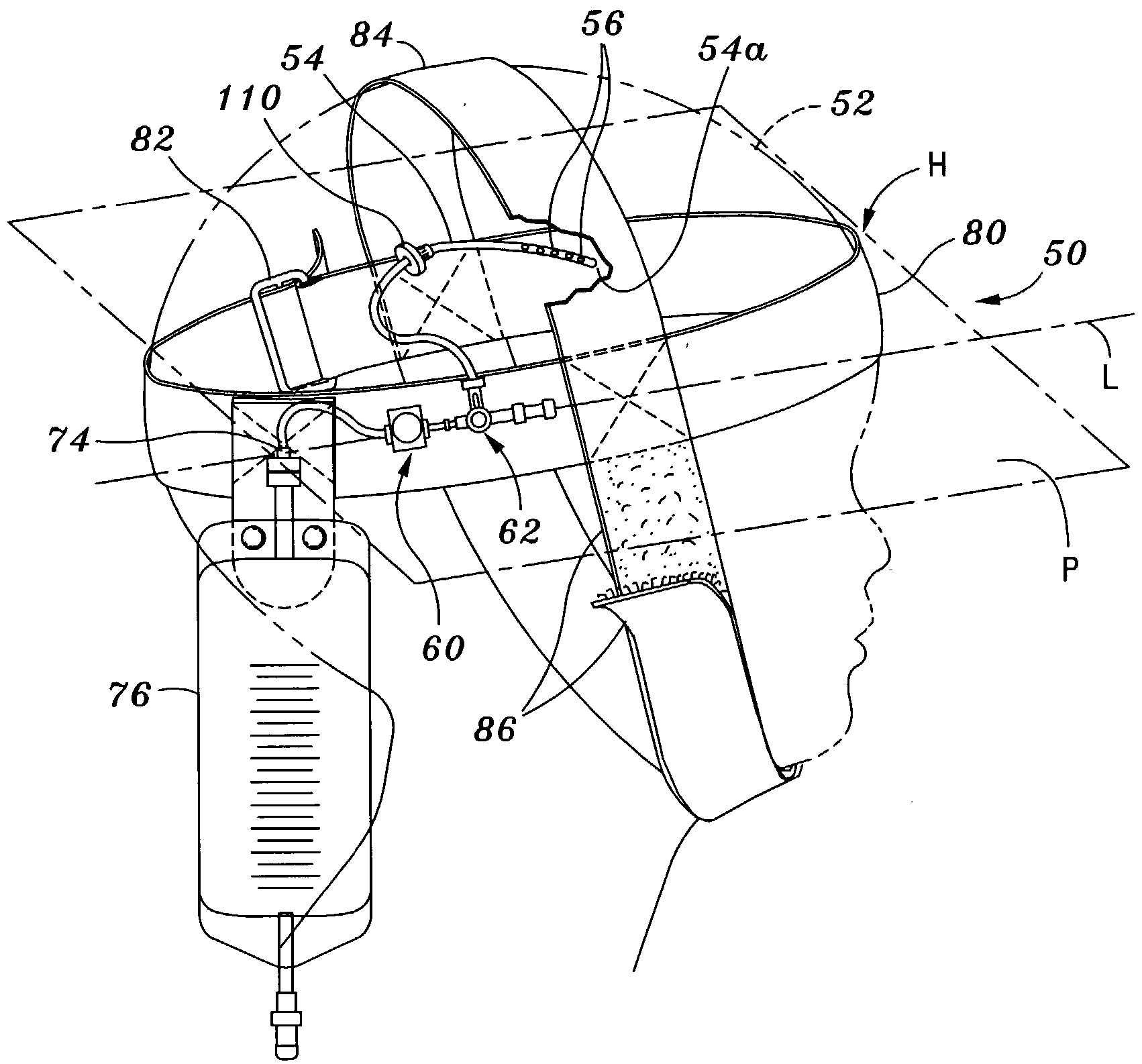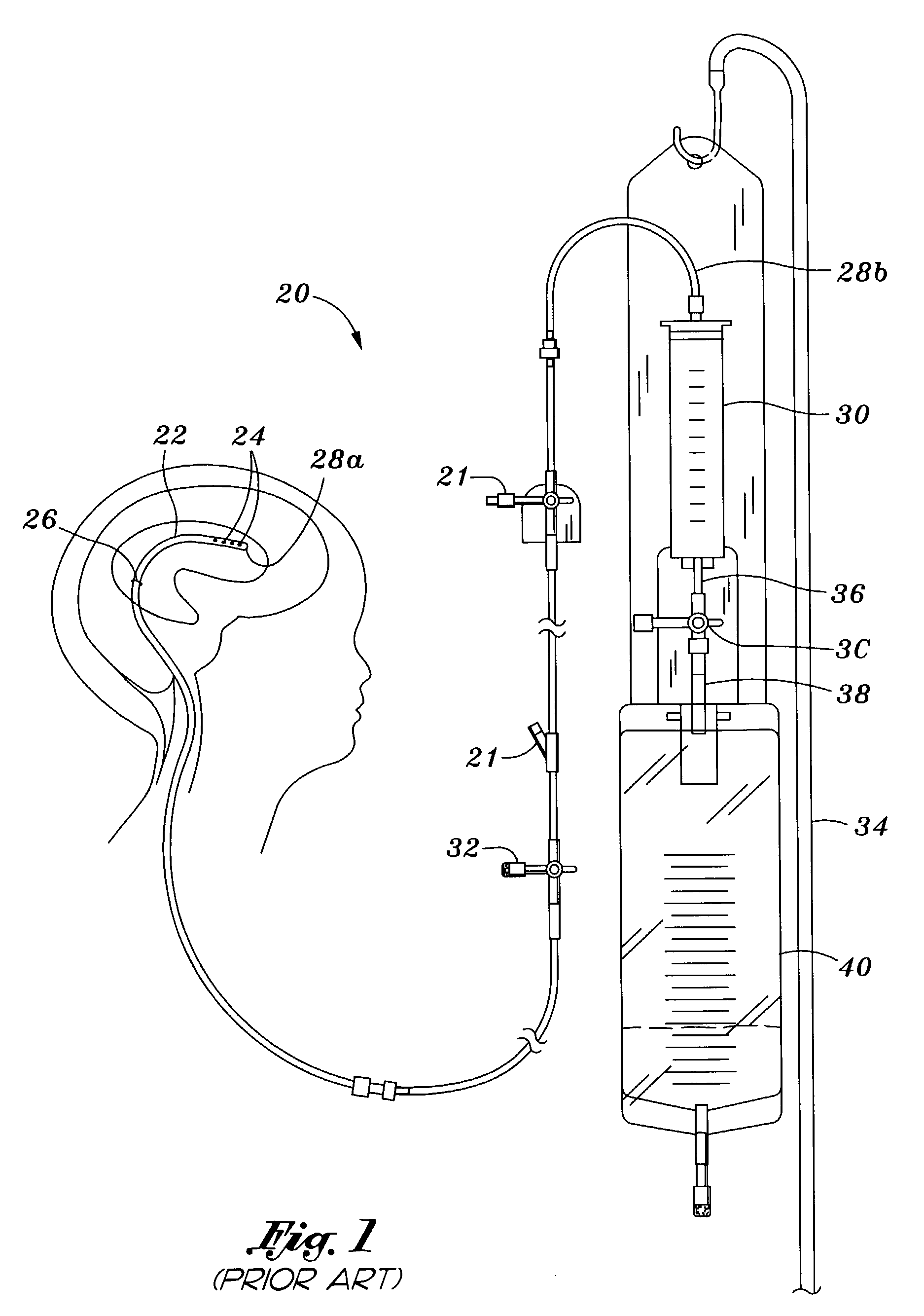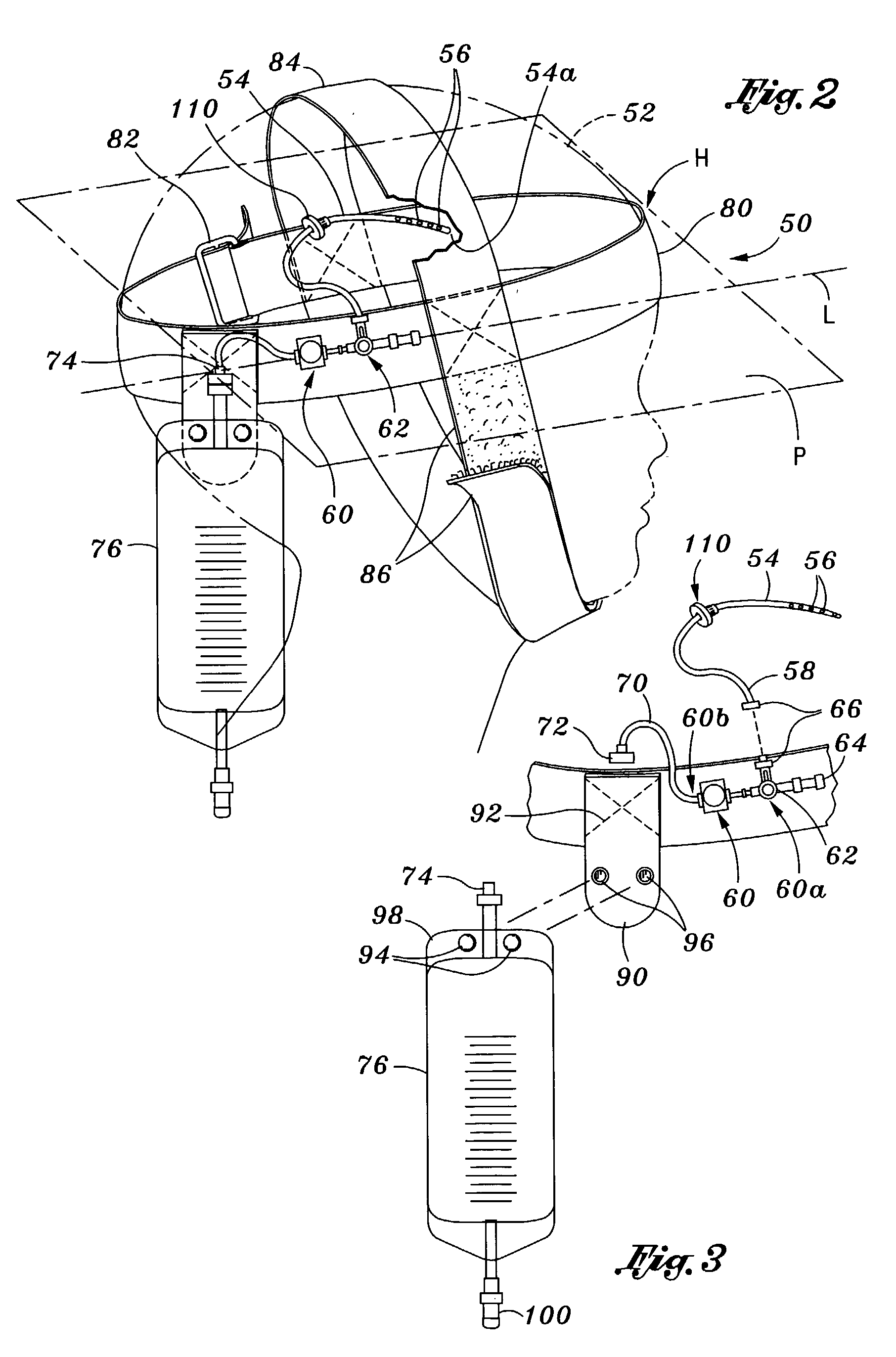Portable pressure relief system & methods
a pressure relief system and portability technology, applied in the field of portability pressure relief system & methods, can solve the problems of reducing patient mobility, reducing patient mobility, and reducing patient mobility, so as to reduce costs, enhance patient mobility, and enhance patient mobility
- Summary
- Abstract
- Description
- Claims
- Application Information
AI Technical Summary
Benefits of technology
Problems solved by technology
Method used
Image
Examples
Embodiment Construction
[0037] One embodiment of the intracranial drainage system 50 of present invention is shown in FIG. 2 mounted to the head 52 of a patient. FIG. 3 shows this system 50 in isolation and partially exploded. The drainage system 50 comprises a drainage catheter 54 having a distal end 54a with a plurality of drainage apertures 56 therein. A proximal end 58 of the drainage catheter 54 is in fluid communication with an inlet 60a of a one-way pressure-responsive valve 60. The proximal end 58 may connect directly to the inlet 60a of the pressure-responsive valve 60, or may be connected via an intermediate three-way junction or stock cock 62 having a sampling port 64. A mating pair of connectors 66 may be utilized so that the drainage catheter 54 can be decoupled from the remainder of the system if necessary.
[0038] A drainage tube 70 attaches to an outlet 60b of the pressure-responsive valve 60 and has a coupling 72 on its opposite end that mates with an inlet to 74 of a reservoir bag 76. The s...
PUM
 Login to View More
Login to View More Abstract
Description
Claims
Application Information
 Login to View More
Login to View More - R&D
- Intellectual Property
- Life Sciences
- Materials
- Tech Scout
- Unparalleled Data Quality
- Higher Quality Content
- 60% Fewer Hallucinations
Browse by: Latest US Patents, China's latest patents, Technical Efficacy Thesaurus, Application Domain, Technology Topic, Popular Technical Reports.
© 2025 PatSnap. All rights reserved.Legal|Privacy policy|Modern Slavery Act Transparency Statement|Sitemap|About US| Contact US: help@patsnap.com



